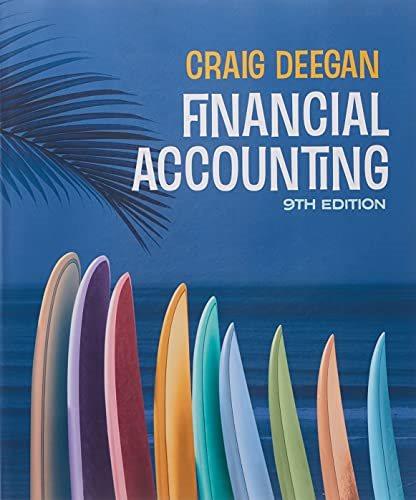Question 1 Our company is authorized to issue 100,000 shares of no par value common stock that has a $1 stated value. On August 21
Question 1 Our company is authorized to issue 100,000 shares of no par value common stock that has a $1 stated value. On August 21 we issued 20,000 shares for $12 per share. What account(s) and amount(s) would we credit when we record the journal entry for this transaction?
| common stock, $100,000 and paid in capital in excess of stated value, $1,100,000 |
| common stock, $20,000 and paid in capital in excess of stated value, $220,000 |
Flag this QuestionQuestion 2 pts On the statement of cash flows, depreciation expense is shown as a:
| deduction from net income in the cash flows from operating activities section |
| addition to net income in the cash flows from operating activities section |
| cash inflow in the cash flows from financing activities section |
| cash outflow in the cash flows from financing activities section |
Flag this QuestionQuestion 3 pts A purchase of treasury stock by a corporation:
| decreases the number of shares issued |
| increases the number of shares issued |
| increases the number of shares outstanding |
| decreases the number of shares outstanding |
Flag this QuestionQuestion 4 pts On September 12 our company purchased 2,000 shares of the companys $1 par value common stock as treasury stock, paying $9 cash. What account(s) and amount(s) would we debit when we record the journal entry for this transaction?
Flag this QuestionQuestion 5 pts On June 1, the companys Board of Directors announces (date of declaration) the intention to pay a $0.50 per share dividend on the 1,000,000 outstanding shares of common stock to the stockholders of record on June 15. The payment date for the cash dividend is June 30. What account and amount would we debit when we record the journal entry on the date of declaration?
| dividends payable, $500,000 |
Flag this QuestionQuestion 6 pts Preferred stock gives its owners certain advantages over common stockholders, including:
| the right to receive a dividend regardless of the financial condition of the corporation. |
| the right to receive dividends before common stockholders. |
| the right to vote for members of the Board of Directors. |
| the right to sell their shares back to the corporation at market value. |
Flag this QuestionQuestion 7 pts On June 1, the companys Board of Directors announces (date of declaration) the intention to pay a $0.50 per share dividend on the 1,000,000 outstanding shares of common stock to the stockholders of record on June 15. The payment date for the cash dividend is June 30. What account and amount would we credit when we record the journal entry on the date of declaration?
| dividends payable, $500,000 |
Flag this QuestionQuestion 8 pts Our company originally issued 1,000 shares $1 par value common stock for $9 per share. We repurchased 200 shares of the stock as treasury stock for $10 per share. On September 5, we sold 100 shares of treasury stock for $12 per share. What account(s) and amount(s) would we debit when we record the journal entry for the September 5 transaction?
| treasury stock, $1,000 and paid in capital from treasury stock, $200 |
Flag this QuestionQuestion 9 pts On the statement of cash flows, the issuance of common stock for cash is an example of:
| cash inflow in the cash flows from financing activities section |
| cash outflow in the cash flows from financing activities section |
| cash inflow in the cash flows from investing activities section |
| cash outflow in the cash flows from investing activities section |
Flag this QuestionQuestion 10 pts Which of the following is true about a corporation?
| corporations cannot be privately held |
| earnings are not subject to double taxation |
| stockholders may have liability for debts of the corporation |
| corporations are separate legal entities organized independently of its owners |






